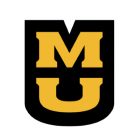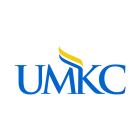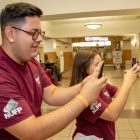What’s the best way to announce new office hours?
How much italics should I use?
Is it OK to just say, “click here”?
While updating your office/department website over the past two months, you may have had questions like these.
This year’s virtual Web Accessibility Clinic, partnering with Global Accessibility Awareness Day, will provide answers.
Points of emphasis
Use the notice block when appropriate, but don’t go overboard.
Use bold and italics lightly.
Make sure you’re following the style guide.
- Regularly check time-sensitive notices on your website to be sure they’re current, particularly those referencing office closures.
- Consider using a Notice block for short-term, brief, important information.
- Don’t bold or italicize an entire sentence. Treat just the important word(s).
- Link text, by itself, should provide the user with an idea of the destination. Click here, More info and Read more should be avoided.
- Examples of links that may be unclear if read out of context of the surrounding content:
- Click here to see program requirements.
- More info about web accessibility.
- Read more about building websites with Web Press.
- Examples of links that are concise, descriptive and clear:
- Examples of links that may be unclear if read out of context of the surrounding content:
- Select Editorial Style Guide entries include:
- In time references, use figures with a.m. and p.m throughout. Omit :00.
- Examples: Summer office hours are 9 a.m.-4:30 p.m. Telephone support is available 2:30-4 p.m. daily.
- In email addresses, capitalize each word. Example: BoomerBear@MissouriState.edu.
- Preferred capitalizations, spelling and usage:
- Phone numbers: use dashes, not periods. Omit parentheses around the area code. 417-836-5000
- Most words beginning with “non” or “post” should be formatted as one word with no hyphen (ex. noncredit, nondegree, nondegree-seeking, postbaccalaureate, postdoctoral, postdoctorate). Post-master’s should be hyphenated.
- Email, not e-mail.
- Use only one space between sentences. Do not use a space at the end of a paragraph or bulleted list item.
- For web addresses, write descriptive link text.
- Common Bear terms:
- Bear CLAW
- Bear Line
- BearWear
- BearFare
- BearMail
- BearPass
- Bear Park North (South)
- BoomerMeals
- Bear Breaks
- In time references, use figures with a.m. and p.m throughout. Omit :00.
Content editing best practices
Headings make your content easier to read. Use them.
Alt text helps everyone understand the meaning behind your non-text content (images, infographics, etc.). Not everyone can see, or will want to see, your photo(s).
Link text, or descriptive links, helps the user know where a link goes.
Headings
- Headings are an outline of your content and should make sense out of context.
- Headings divide your content into consumable sections.
- Do not select heading level based on resulting visual presentation style.
- Page title is heading level 1 (h1); first heading in your content will be h2; subtopic will be h3; etc.
- Do not use bold paragraph for heading.
- Avoid centering headings.
Alternative text for non-text content
- Provide alternate (alt) text for non-text content.
- Images, including poster/flyer images (infographics).
- Alt text should convey in text whatever meaning is conveyed by the image/flyer.
- If the image has a lot of information, charts, diagrams, etc., the alt text should contain 1) a short description conveying the essential information presented by the image, and 2) a long description following the image or on another page.
Bar chart displaying cost comparisons as detailed in the following paragraphs.
- If the image has a lot of information, charts, diagrams, etc., the alt text should contain 1) a short description conveying the essential information presented by the image, and 2) a long description following the image or on another page.
Link text (descriptions)
- Very critical to the page containing the link and the destination page.
- Links should make sense out of context.
- Do not use meaningless or incomplete text like click here, learn more, download, etc.
- Do not use URLs for link text.
- Optimal link text is typically 2-6 words.
- Each unique destination should have unique link text.
Content structure
- Use paragraphs, unordered and ordered lists appropriately.
- Write for your target audience.
- Do not use a heading or bold paragraph for announcement or notice. Use “Intro” or “Notice” markup instead.
- Do not add blank paragraphs to generate separating space.
- Do not create manual lists (e.g., starting lines with a hyphen).
- Do not bold or italicize entire paragraphs, even one-line paragraphs. Treat just the important words.
- Do not use all capital letters.
- Avoid centering content.
- The template is spacious by design to facilitate touch interfaces; do not try to circumvent vertical spacing.
Tables
- Used for presenting organized data.
- Never use for layout (e.g., two columns).
- Should always have headers (th). No need to bold or specify header as a heading style.
- Do not combine multiple tables into one with embedded description row preceding each table.
- Precede with descriptive heading, paragraph or include a table caption.











